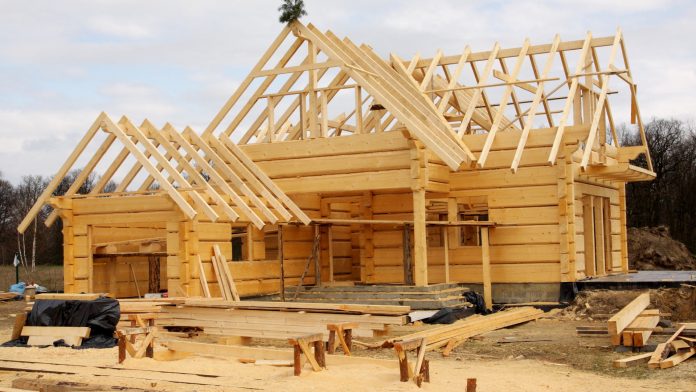Stocks traded slightly higher this morning as the market drew closer to its final session of 2023. The S&P 500 stayed close to its all-time closing high of 4,796.56 for the second consecutive day, rising around 0.2% at the open. The Dow Jones Industrial Average also saw an uptick, advancing more than 0.1%. Leading the gains was the Nasdaq Composite, which added just over 0.2%.
The Nasdaq has made significant strides this year, gaining more than 44%. Should this trend hold, it would mark the best performance for the major average since 2003.
As the day unfolded, stocks aimed to extend their winning streak to a ninth consecutive week. If the S&P 500 achieves this, it would represent its longest weekly winning streak since 2004.
Recent economic data revealed a slight increase in unemployment claims for the week ending December 23. Jobless claims rose to 218,000, up from 205,000 the previous week and surpassing the 210,000 forecast by economists.
Economists are keenly observing the labor market for any indications of weakening that might signal a broader economic slowdown in 2024. However, today’s data did little to heighten such concerns.
Thomas Simons, a U.S. economist at Jefferies, commented in a client note:
“Businesses have been extremely reticent to let go of workers that they struggled to find over the last 3 years. We doubt that they will be able to hold on to everyone indefinitely, but they’re going to try. […] The chances of a soft landing in the labor market have increased, but a landing of some sort is coming for sure.”
The housing market looks to be due for a landing, too, after existing home sales stagnated in November compared to October despite mortgage rates pulling back from their 23-year highs. The National Association of Realtors (NAR) reported that the pending home sales index held steady at 71.6, the lowest since its inception in 2001. This figure fell short of the 0.9% increase predicted by economists.
This stagnation in the index, which is a key indicator of the housing market’s health, suggests buyers may be wary of reentering the market, even with the recent drop in mortgage rates. The trend might also be influenced by seasonal factors, as some buyers postpone their purchase plans until after the holidays.
The overall activity in the resale market continued to lag behind the previous year’s levels, with pending transactions down 5.2%. Lawrence Yun, NAR’s chief economist, observed, “Although declining mortgage rates did not induce more homebuyers to submit formal contracts in November, it has sparked a surge in interest. With mortgage rates falling further in December, home sales will improve in 2024.”
As mortgage rates retreated from multi-decade highs last month, there was a modest improvement in homebuyer affordability. After peaking at 7.79% in October, the average rate for a 30-year fixed mortgage decreased from 7.76% at the start of November to 7.22% by the end of the month, according to Freddie Mac. Rates have since fallen more than a full percentage point from October’s peak.
The fall in rates last month came amid signs of cooling inflation and growing investor belief that the Federal Reserve would pause its aggressive rate hike campaign in December. The yield on the 10-year Treasury, which influences fixed-mortgage rates, also declined, reinforcing expectations of a pause in rate hikes and potential cuts next year.
Danielle Hale, Realtor.com’s chief economist, noted, “With home prices likely to remain high, mortgage rates will be an important determinant of both affordability and overall activity.”
In November, the average monthly payment for conventional loans was $2,137, down $62 from October, as reported by the Mortgage Bankers Association (MBA). FHA applicants saw a decrease in their average monthly payment from $1,995 in October to $1,902 in November. However, the average monthly payment for conventional loans was still higher than the previous year’s $1,994, as per the MBA’s findings.
Keith Gumbinger, vice president of HSH.com, explained, “Lower mortgage rates don’t fix all the troubles in the housing market. They help with affordability but do little to increase the number of homes for sale.”
Regionally, month-over-month contract signings in the West and Midwest saw increases of 4.2% and 0.5%, respectively. The Northeast experienced a modest 0.8% rise, while the South witnessed a 2.3% decrease from October. All regions reported year-over-year declines in transactions.
“Home sales activity could register better than expected if mortgage rates are able to hold on to the improvement garnered in the last two months,” explained Hale.
While November saw an uptick in newly listed homes and a slight increase in inventory, active inventory still remained significantly below typical levels from 2017 and 2019. This shortage, coupled with ongoing demand, could lead to more transactions in 2024, although Gumbinger warned of potential consequences, stating that “the drop in rates makes it more likely that prices will start heading higher earlier than normal in 2024, and higher prices will erase some of the benefit of lower mortgage rates.”
It’s a “damned if you do, damned if you don’t” scenario for house hunters. The Fed, too, would like to see shelter inflation fall. But with a drop in rates arguably ready to fuel a leap higher in home prices, leading to higher rents, the Fed may have another fight with inflation on its hands next year despite assumptions that inflation would remain subdued.








